What are the 10 most photogenic birds of Costa Rica?
This small but rich country lodges nothing but 932 species of birds, the conditions and relative close distances to each location provides great conditions for the birds and also for those people who love birding and even more capturing through the lens of the camera those special moments, colors and shapes of the beautiful birds.
We have worked on setting a list of the most beautiful birds for photography, the natural models of our forests. It is not an easy task to accomplish but hopefully we can reach the most accurate species. With the caveat that beauty is always in the eye of the beholder, in no particular order, here’s our take on 10 of the more photogenic birds.
Resplendent Quetzal
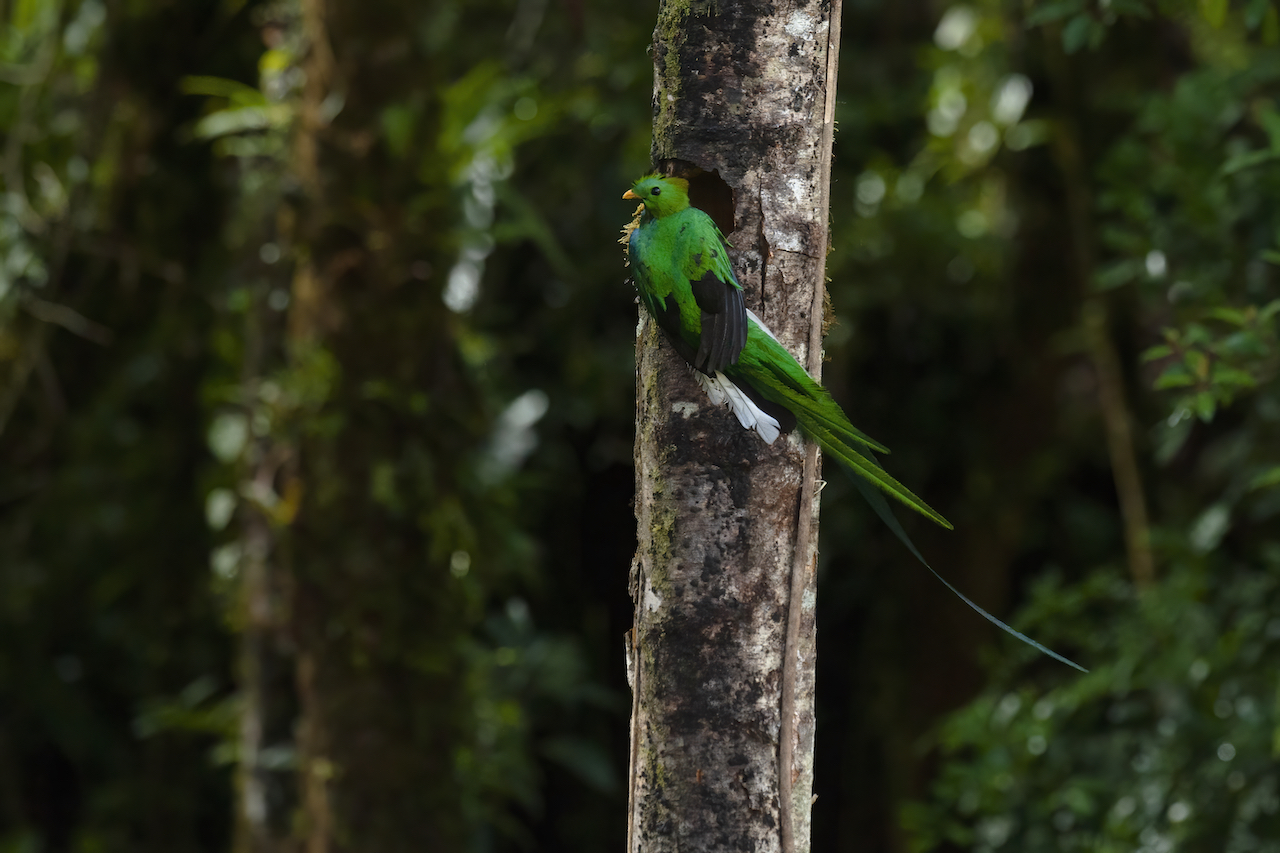
Large, spectacular trogon of humid evergreen and pine-evergreen forest in the mountains of southern Mexico and Central America. It is the national bird (and lends its name to the currency) of Guatemala. Usually rather shy, but can be found feeding quietly at fruiting trees. Male is unmistakable with long emerald plumes flowing out behind in flight or blowing in the wind when perched. On females, note large size, grayish head, gray bill, and greatly reduced jagged plumes on the side of the breast.
Agami Heron
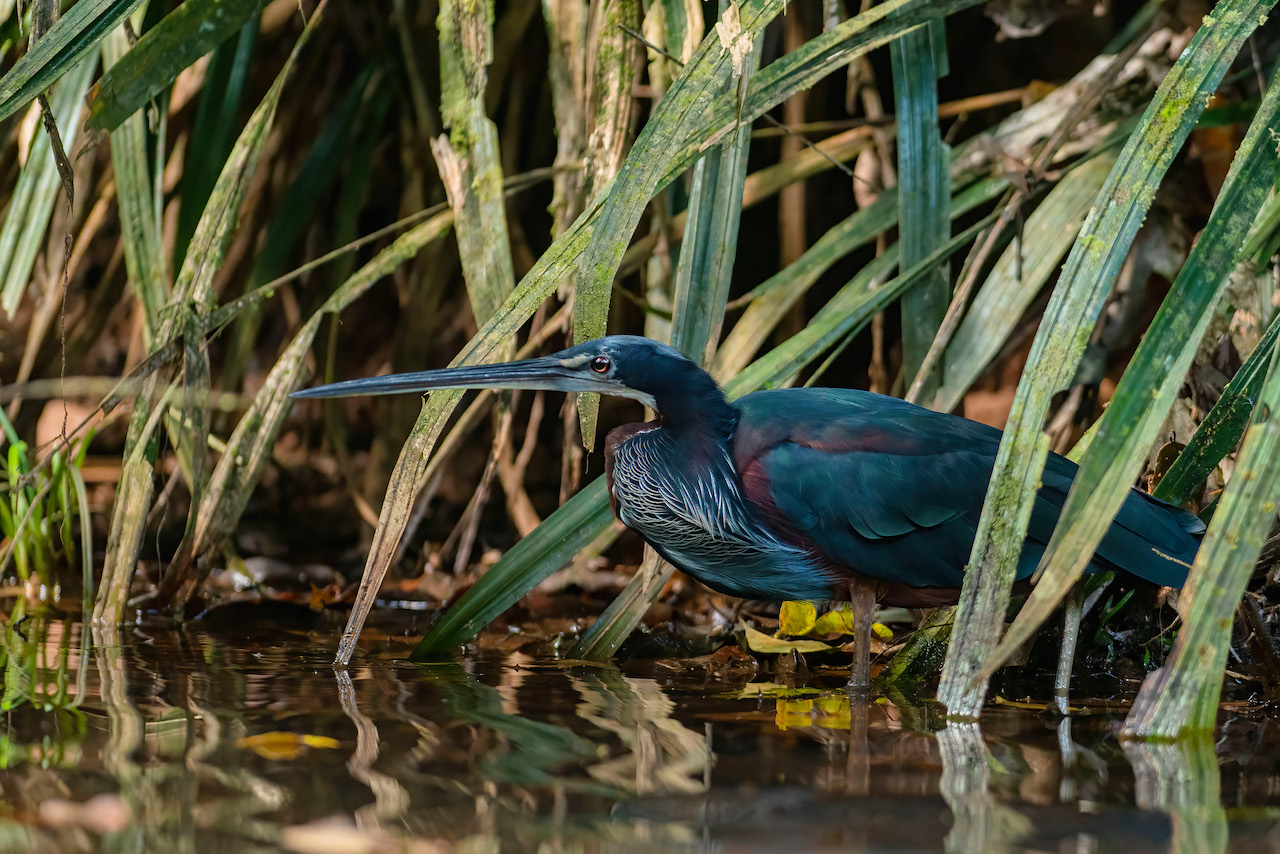
Reclusive, rarely seen heron of humid tropical lowlands. Found along quiet forest streams and locally in mangroves. Walks slowly and stealthily hunting from the water’s edge or a low overhanging branch. Note the very long and slender, dagger-tipped bill. Adult plumage is dark overall, with a beautiful silvery spray of lacy neck plumes. Immature is browner overall, without the neck plumes.
Sunbittern
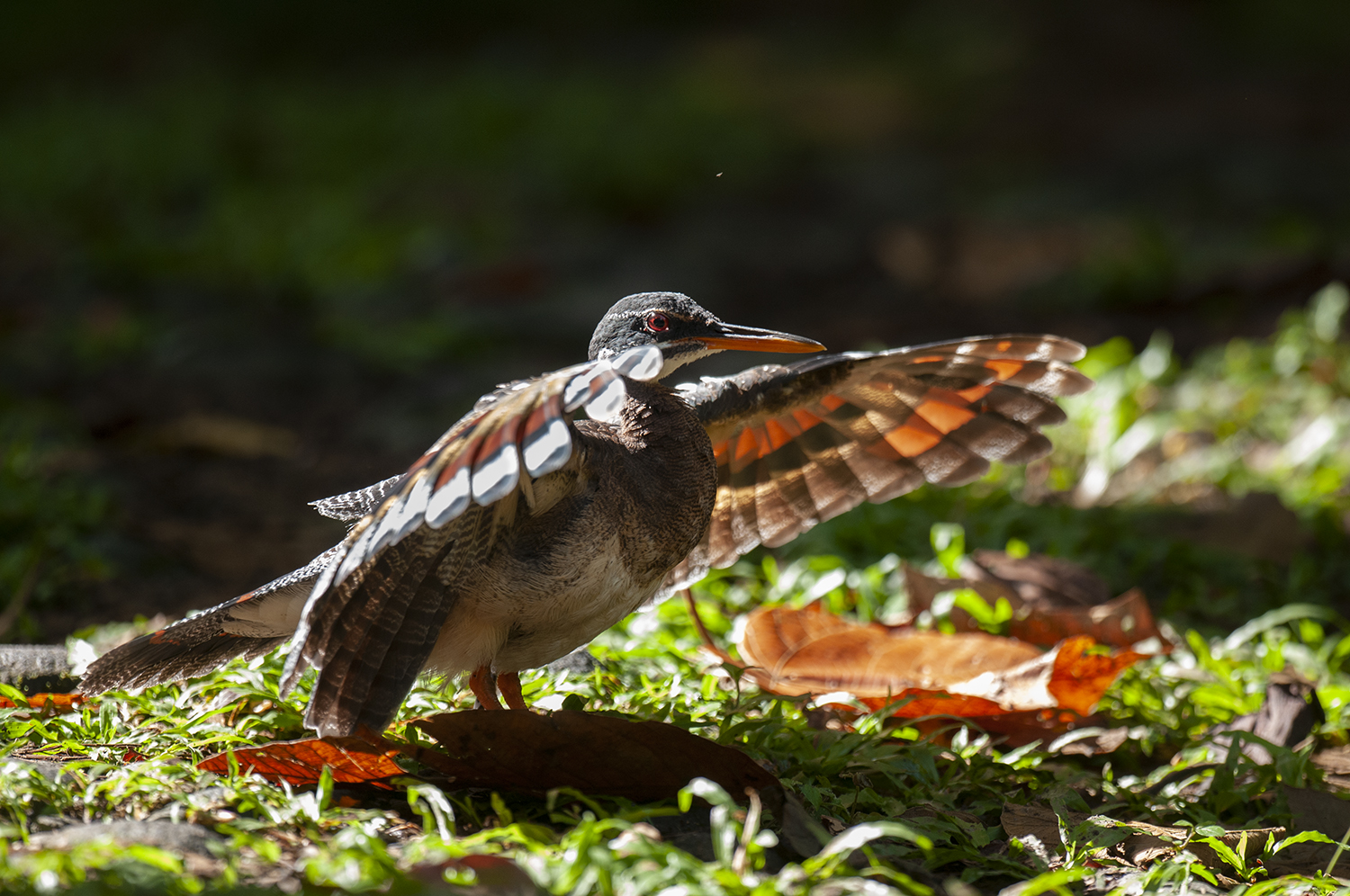
One of the most dazzling of all the world’s birds; the intricate yellow, red, and black pattern on the spread wings is truly otherworldly. When standing, rather heron-like shape but with a more horizontal posture and longer tail. Also look for striped black-and-white heads and barred backs. Found singly or in pairs along rivers or swamps, usually standing quietly along the shore. Listen for long whistles at dawn and dusk.
Snowcap Hummingbird
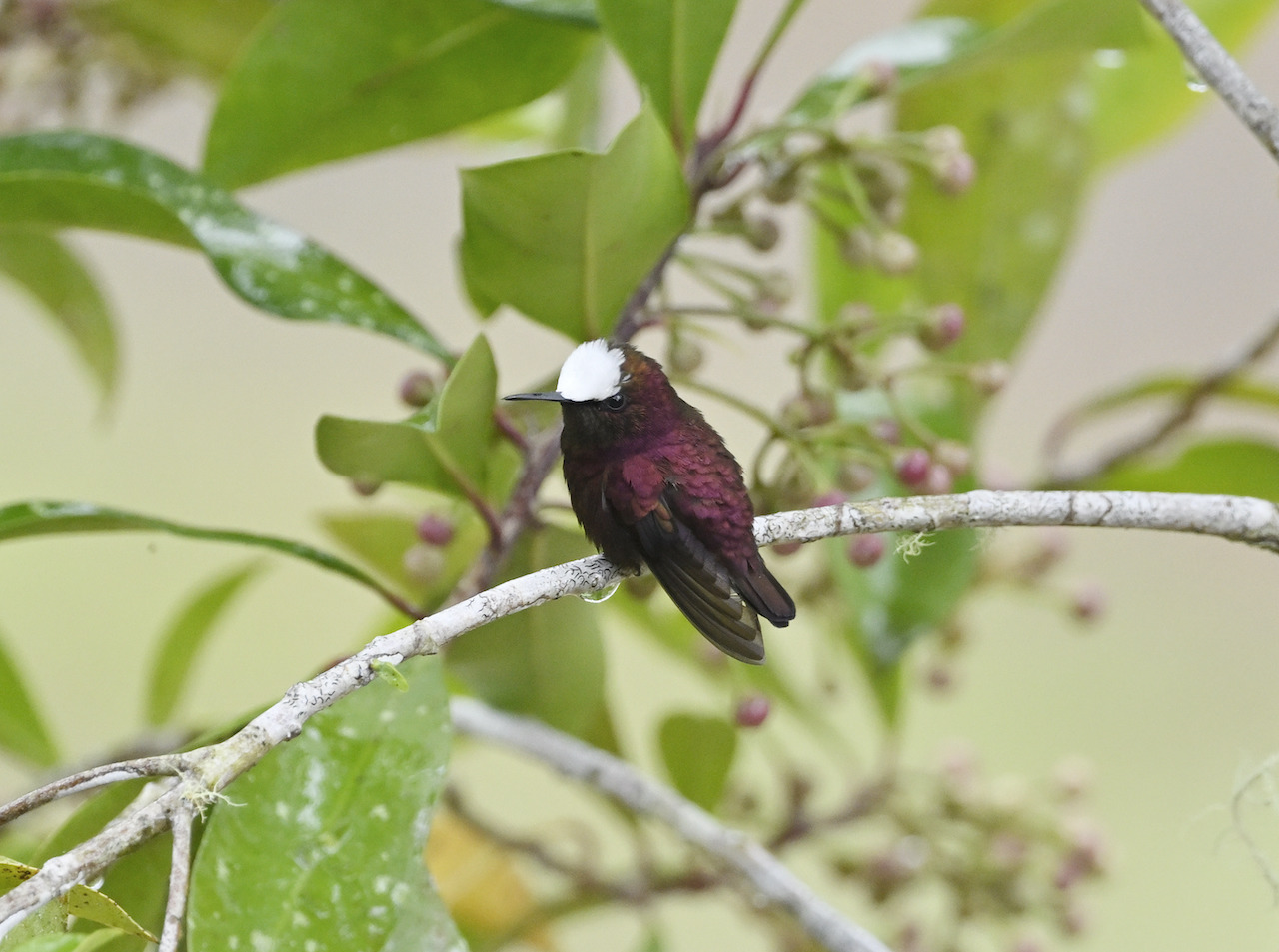
Tiny hummingbird; male is unique and beautiful: his body is the color of red wine, and he has a bright white cap. Unmistakable in limited range. Female is less striking, but note small size, snowy white underparts, and short straight bill. Most often seen feeding at small purple flowers in gardens and forest edges
Keel-billed Toucan
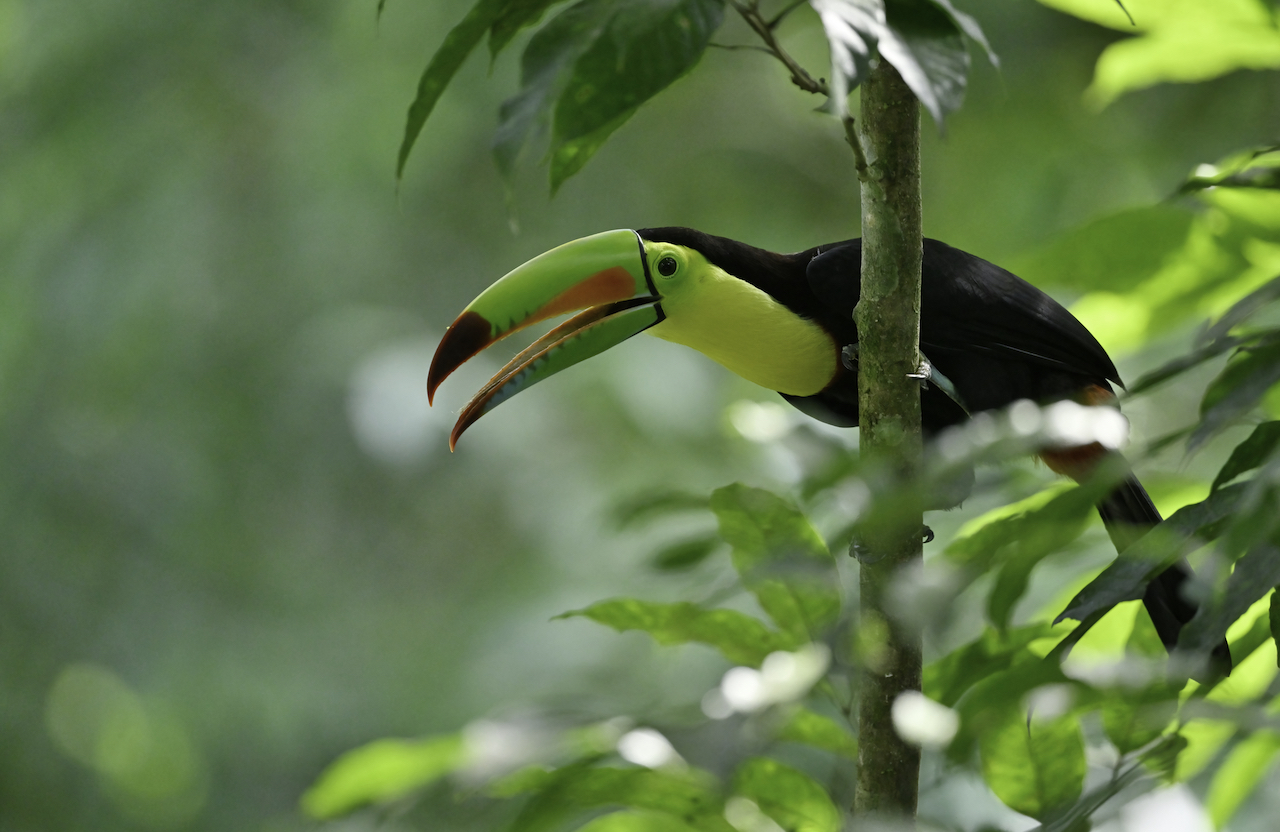
Large unmistakable toucan with a huge, rainbow-colored bill. Often seen in pairs, but not usually in groups like aracaris. Flies with a few flaps followed by a swooping glide, sometimes high over the forest canopy, and looks like a ‘flying banana.’ Heard more often than seen: ‘song’ is a far-carrying, frog-like croak, repeated steadily. Despite its large size and bright colors, it can be difficult to see in the leafy canopy, where it moves deliberately in search of food.
Red-headed Barbet
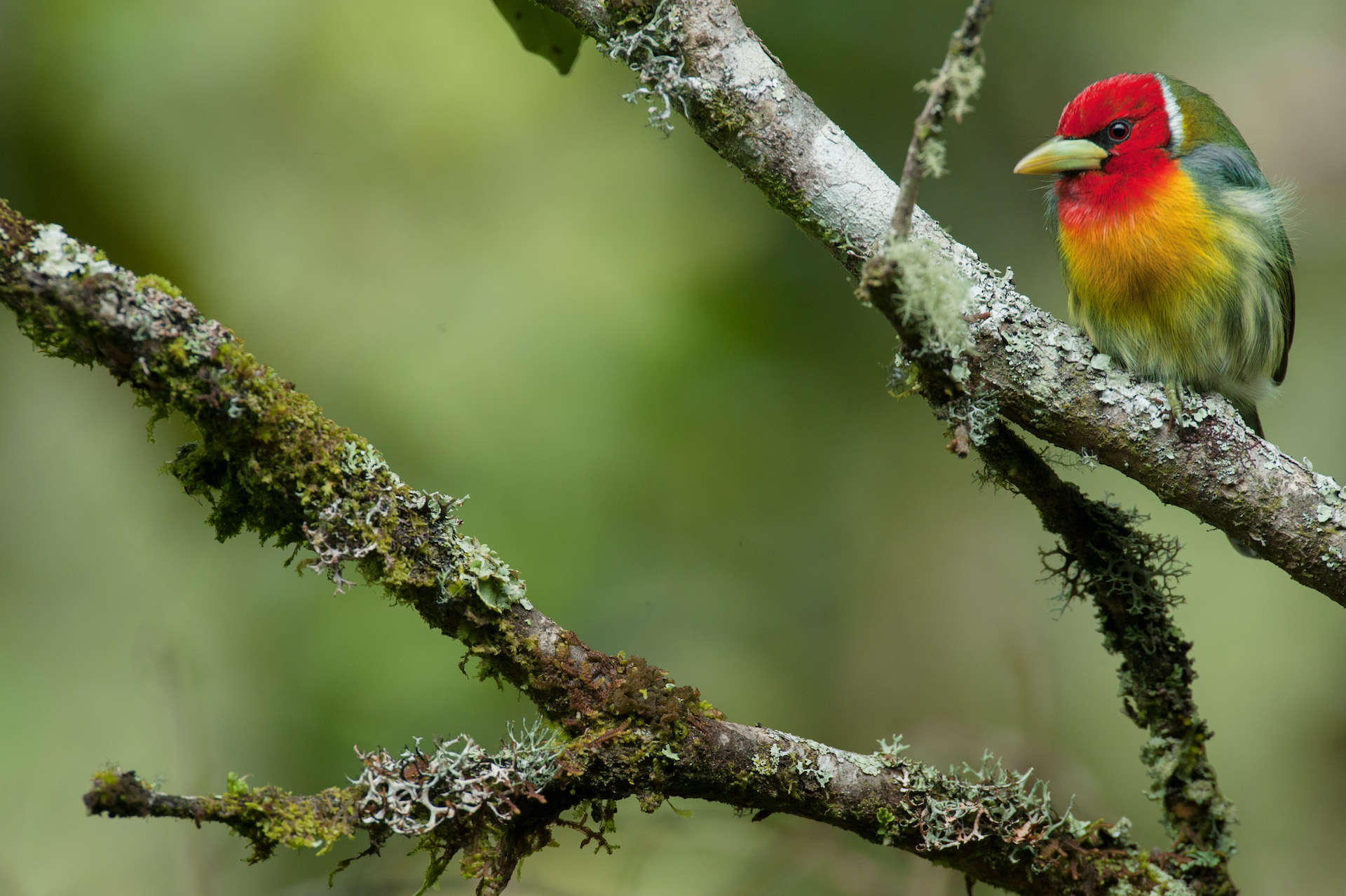
Male is unmistakable with a bright red head, green back, yellow belly, and stout yellow bill. Also notice the oval-shaped body with a large head and short tail. Female is similar to some South American barbet species , but has a head pattern: blue cheek, orange side of neck, and black forehead. Usually found in pairs, often accompanying a mixed-species flock in the forest canopy. Sometimes it visits fruit feeders.
Scarlet Macaw
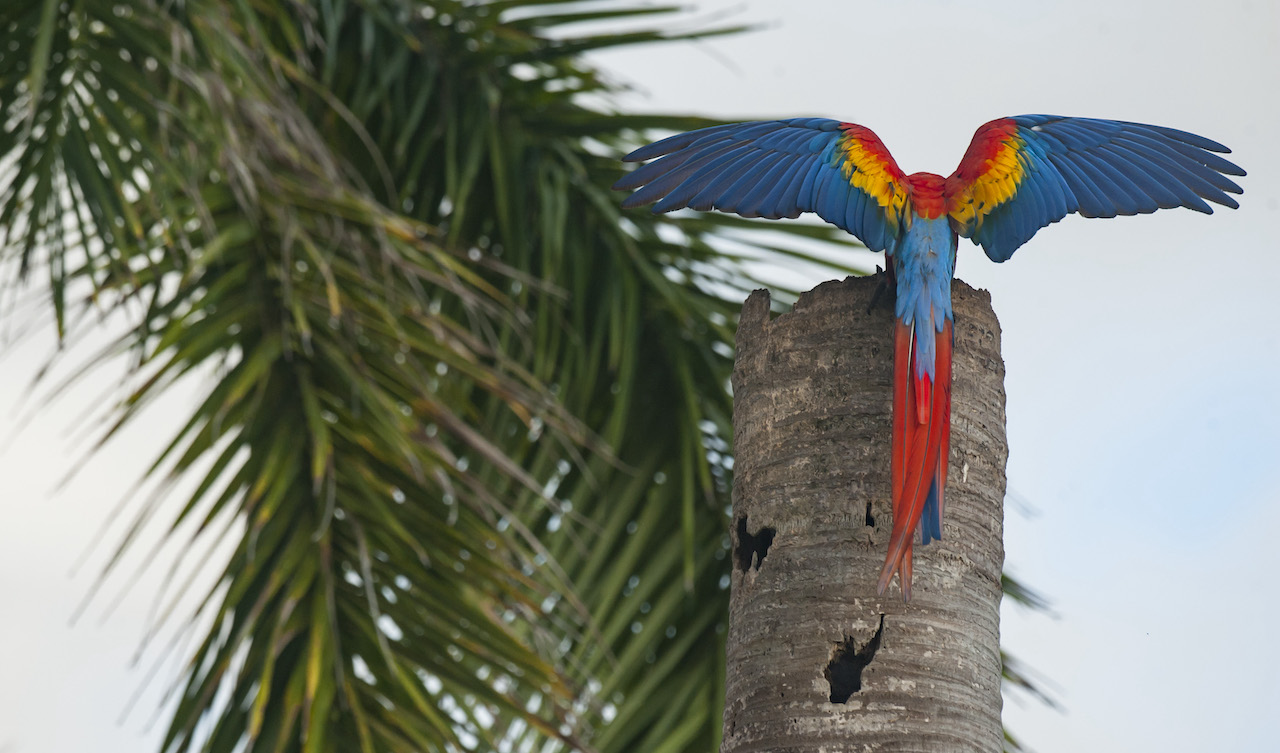
Spectacular, huge, and long-tailed parrots, wiped out from most areas by capture for the pet trade; attempts at reintroduction are taking place in some protected areas. Found very locally in lowland rainforest and adjacent semi open areas with big trees; usually in pairs. Unmistakable, bright scarlet red overall with big yellow wing patches and mostly blue wings and rump. Calls are deep, throaty roars that carry long distances.
Long-tailed Manakin
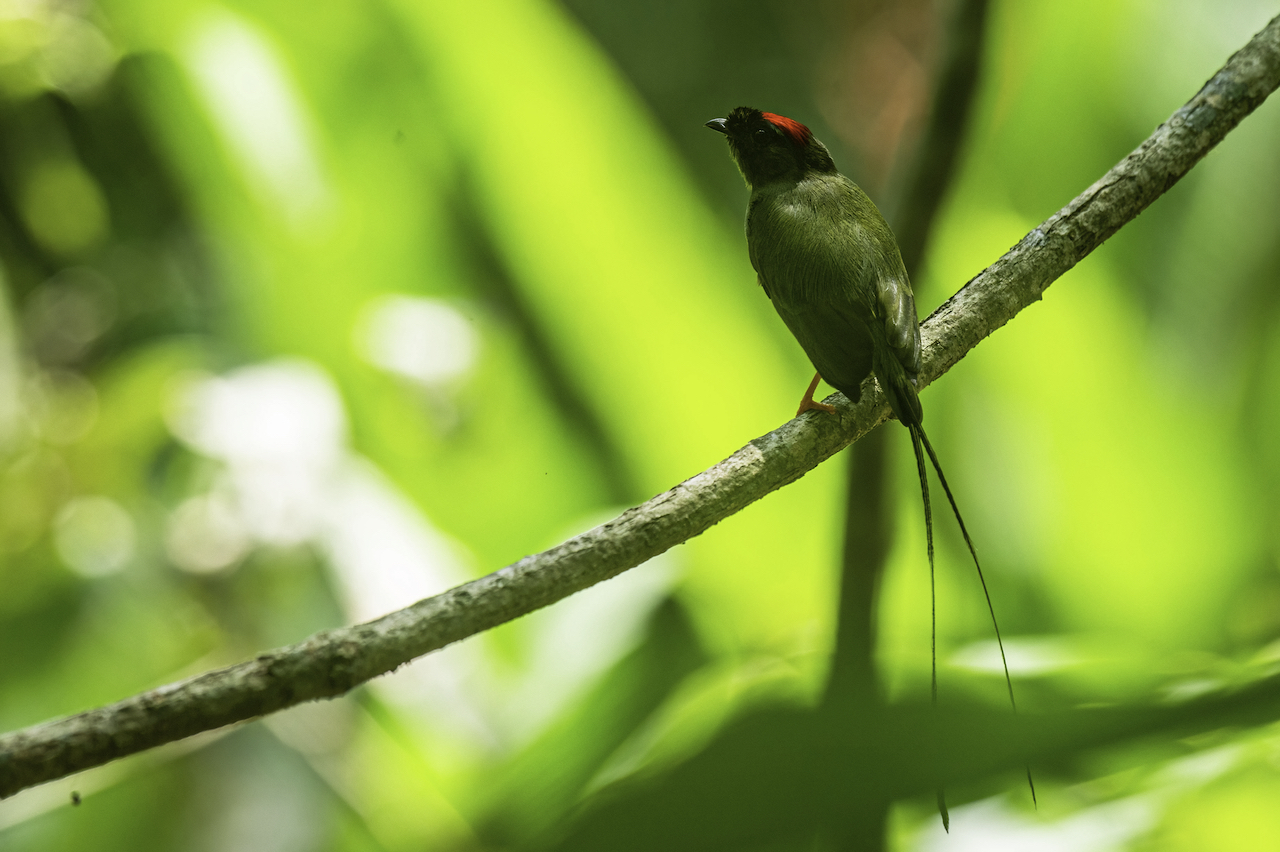
Attractive, chunky little bird of tropical forest in dry and humid lowlands and foothills. Away from display areas, usually found in ones and twos perched quietly or feeding at fruiting trees and bushes from understory to canopy. Complex displays involve loud whistles and interactions between two males. Adult male is unmistakable. Female and young are greenish overall with orange legs and rather long tail. Immature males have varying degrees of adult male plumage; the sky-blue back being the last feature to appear.
Turquoise Cotinga
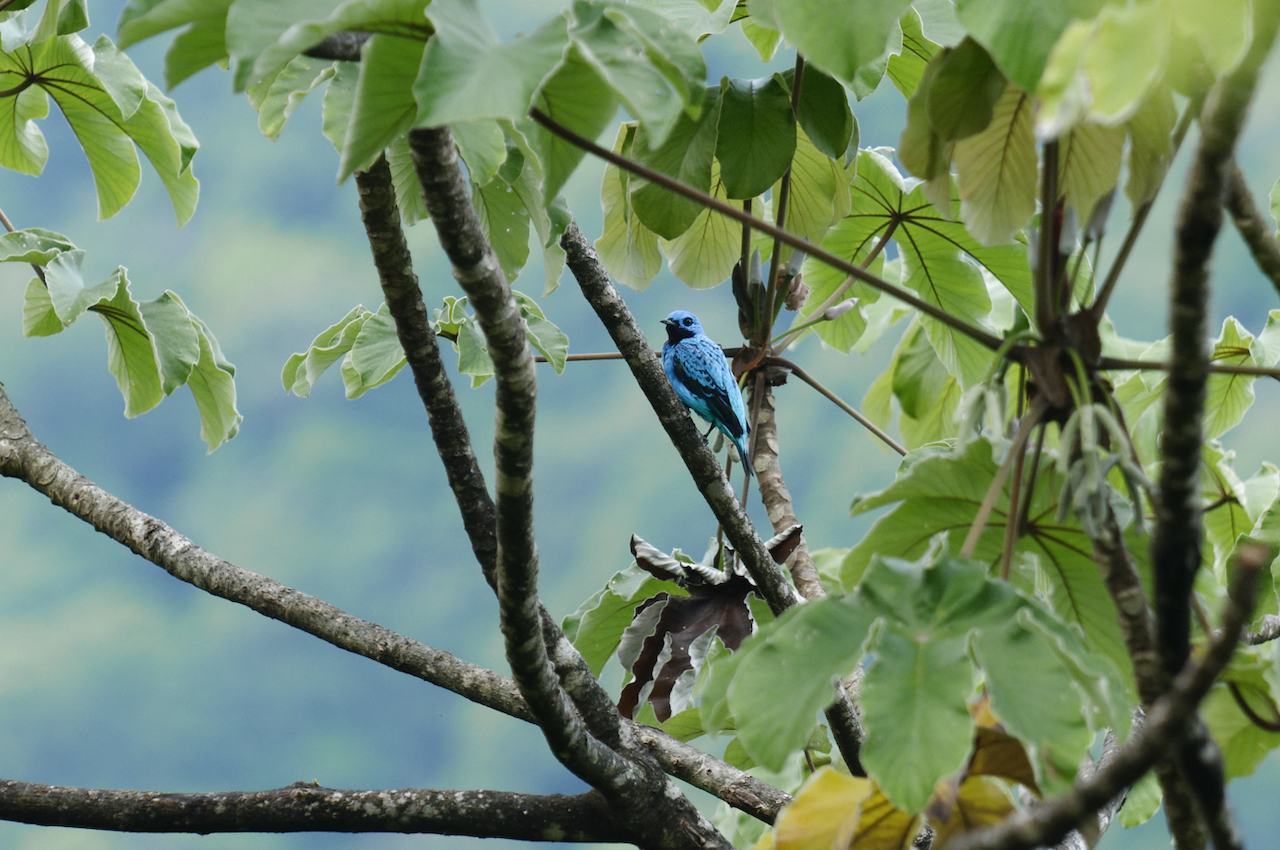
Unmistakable in range: male is stunning electric-blue with purple patch on throat and belly. Female completely different; pale grayish with heavy spotting below and scaling on back. Note shape: rather plump and short-tailed with a small bill and large eye. Tends to be slow-moving, perching obviously atop the canopy or inconspicuously feeding within a fruiting tree. Found in forested areas, singly or in pairs.
Golden-hooded Tanager
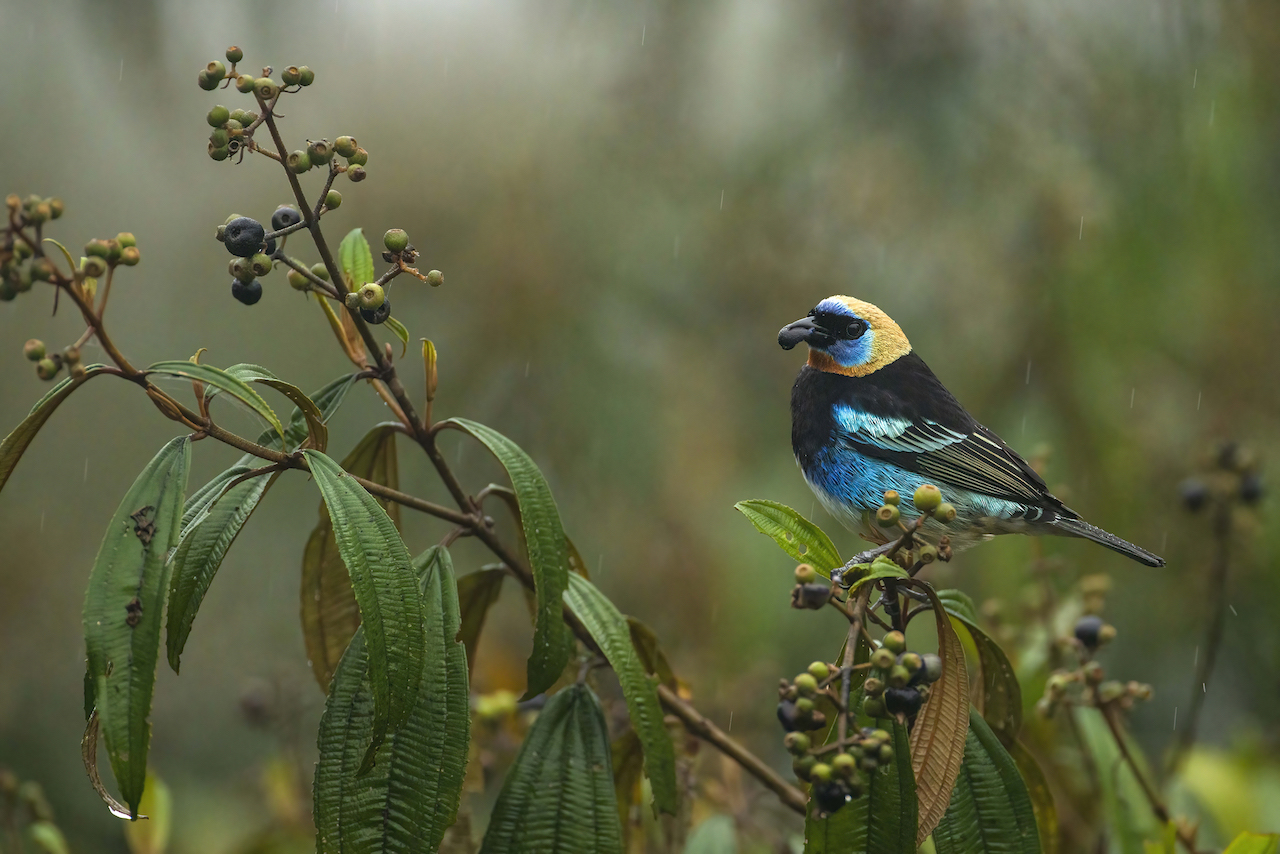
Very attractive small tanager of humid tropical lowlands. Found in humid evergreen forest edges, plantations, and gardens; at times with mixed-species feeding flocks of honeycreepers and euphonias. Often in pairs, feeding at all levels in fruiting trees and bushes. Sexes look alike: black and blue overall with a white belly and a soft golden hood; in good light, varied purple and turquoise sheens are apparent.
Reference: www.ebird.org
